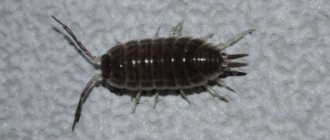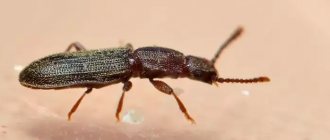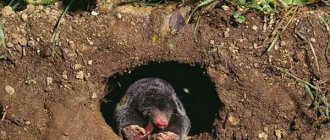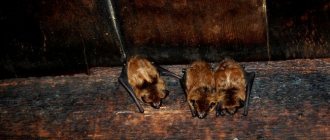The appearance of moles on the territory is an unpleasant surprise for any owner. Small diggers live in all regions of Russia and choose the best areas with soft, fertile soil for feeding. They are frequent guests on fertilized lands of summer cottages and lawns. Having discovered the characteristic cones of the earth, summer residents lose peace. Let's look at how to get rid of moles, which methods are the most effective and less expensive.
- How to get rid of moles depending on the place In the cellar Plants
- Blocking access
- Poisons
- Other methods
- Smell repellent
Why the problem should not be ignored
The mole does not eat the roots of plants, but rarely their fruits. Therefore, the harvest itself in the garden or fruit trees and bushes will be partially affected. However, by digging up everything and everyone, moles disrupt the natural structure of the soil, which leads to the death of most crops.
Undermined roots contribute to the drying out of young trees. In addition, root crops or bushes fall into mole holes.
By the way, the animals are able to make preparations from potatoes or carrots so as not to remain hungry. In this case, summer residents begin to think about how to get rid of moles on the site themselves, without extra expenses for specialized services.
Prevention of moles
If moles have appeared in the neighborhood, there are a lot of tasty earthworms in the ground, the soil is light and fertile, the blind will easily take over the area. It is especially dangerous if the diggers decide to live on the territory and breed.
Possible preventive measures:
- Creating a barrier to entry into the site. This is a rather difficult and costly method, but if your neighbors have moles, it can protect. The maximum depth of passages is 60 centimeters. This is the depth to which protection is made. Slate sheets are dug vertically around the perimeter of the garden, deepening it half a meter, leaving 15-20 centimeters on top for external protection. You can replace slate with a fine-grained mesh, which is dug in using the same method on all sides along the boundary.
- Construction around the perimeter of a deep ditch (60-70 centimeters), which is covered with rubble, stones, and sand.
- Planting plants that repel moles with an unpleasant odor. Popular types are hazel grouse, marigolds, black beans, onions and garlic, bird cherry, and celery.
- A large number of inhabitants permanently located on the territory. Densely populated summer cottages, with many noisy children, cats and dogs who trample the beds and break my favorite roses, I rarely choose moles. Lawns should not be groomed too much; you should run on them and play on the grass. Land dwellers are more likely to move to the neighboring, eternally empty plot. They definitely won’t dare to have offspring.
Many summer residents and home owners prefer to carry out preventive protection against moles than to look for how to get rid of blind moles when they have already entered the site.
Each method of fighting moles has its pros and cons. Many people do not want to pollute the site with pesticides, others feel sorry for digging up the ground in search of passages. The choice of means remains with the owner. From a whole arsenal of methods, you can choose the most convenient and effective one, and expel moles from your favorite dacha.
What is this mammal?
Moles are constantly hungry; they eat at least 50 g of food daily. If the animal stops eating, it will die within 24 hours. These mammals rarely live in families.
Mostly moles are hermits. Over the course of a few days, they build kilometers of tunnels within the garden, placing them at different depths.
The female breeds her babies once a year in a separate den, which is located at a depth of at least 2 meters. After a month and a half, the young animals become completely independent individuals. There are several varieties of moles found in our country:
- European.
- Blind.
- Baby.
- Mogera is big.
- Mogera is small.
The most favorable habitat for moles is soil rich in larvae, worms, caterpillars, and underground insects. Moles are thrifty. They often bite worms and store the spoils in their burrow. Preparations are also made from vegetables available in the garden.
The size of an ordinary mole reaches 20 cm, and its weight is only 150 g. The lifespan of the average mole is 5-6 years.
Despite the fact that these animals are completely blind, they orient themselves perfectly in space and, especially underground. This is due to the excellent sense of smell and hearing.
Therefore, one of the simple ways to get rid of moles is to influence their hearing organs and receptors.
Moles can pose a danger to humans because they are carriers of serious diseases: piroplasmosis, tularemia. Individuals carry ticks on themselves, which poses a threat of spreading encephalitis and Lyme disease. It is strictly forbidden to pick up animals.
What to do if moles get into the cellar?
These ubiquitous animals may well end up in a cellar or basement. There they can spoil winter vegetable stocks. To prevent this, it is necessary to stop the life activity and development of the animal in such premises.
Below are the main methods of controlling moles in underground premises:
- Fumigation with poisonous gas . In the summer, when the cellar is empty and the owners can leave the home for a couple of days, this type of struggle can be used. To do this, you need to purchase sulfur bombs in the store, put on respiratory protection and light the fuse. The checker will burn slowly, releasing poisonous gas - sulfuric anhydride. After a 48-hour exposure, the cellar should be opened and the gas should be ventilated from it for a long time.
- Application of chemicals . This method, of course, is devoid of humanism, but what to do if the moles really bother you. Poisons can also kill mice and rats. The toxin used is rat poison, arsenic or Efa gel. They are mixed with baits and placed around the perimeter of the cellar, avoiding contact with vegetables. Earthworms or finely chopped meat are used as bait.
- Use of electronic repellers . These devices, which emit vibration, various impulses or ultrasound, quickly force the moles to retreat.
Attention! You should not try to install traps in the cellar, since it is very difficult to find molehills there. Due to the limited space in the cellar, it is difficult to practice this method there.
Let's fight and destroy the moles
What is the most effective way to get rid of moles? In fact, there are a lot of them. The use of certain techniques depends on the specifics of the site and the ability to use certain means. By the way, not all types of destruction of these animals are humane.
Effectively getting rid of moles is a series of measures using chemicals. Traps and repellers are slightly less effective. There are also folk techniques that are quite helpful in getting rid of these pests.
Electronic repellent devices
In their garden plots, owners often use electronic repellent devices. This frees people from having to dig up the ground in search of molehills, as well as from clogging the soil with chemicals. This method captivates summer residents with its simplicity and convenience.
Such electronic devices should be buried to the depth specified in the instructions and dead batteries should be replaced from time to time. When the device is turned on, it makes sounds that are unpleasant for moles or creates vibration.
A person does not feel such vibrations, but they cause great discomfort to a mole. Tireless diggers will be forced to leave their favorite area and seek their fortune elsewhere.
The following models are considered the best electronic repellers today:
- Space. The device simultaneously produces unpleasant sounds and vibrations. Some models are available with solar power.
- Tornado. Such repellers can be sold as vibration or sound-vibrating ones. One device is enough for a plot of 15 acres. Powered by 4 batteries. The price of the device can reach up to 2.5 thousand rubles.
- Typhoon Anti-Crote. This ultrasonic repeller comes with a buzzer.
- Yochomi. The device was developed in Japan and manufactured in Taiwan. The device is very reliable in operation and has been operating for several decades.
- EcoSniper. A similar brand is produced in Russia; it effectively repels snakes and moles from the area.
- Scat. Ultrasonic device. For a plot of 10 acres, one device of this type is sufficient.
- Remling series of devices. The devices of this company are different. They can make a sound that is unpleasant to moles, create vibration or emit ultrasonic waves.
Important! When purchasing ultrasonic repellers, you need to take into account the area of action and pay attention to what power source the device operates from. Sophisticated people recommend buying either a domestic device or a European-made product.
If there is a need to operate such devices in winter, then you need to choose repellers that are quite effective in frosty weather and frozen soil layers.
Use of poisons
Speaking of how to permanently get rid of moles in the garden, you can use some types of pesticides. Preparations produced specifically for the extermination of moles should be used with caution, strictly following the recommended dosage. For example, you should choose from the following:
- Stop-a-mole.
- Alphos-krot tablets.
- Green house anti-crote.
All of these drugs must be used with great care to avoid harm to pets and people.
You can try using calcium carbide. The product is poured into new passages and clogged. Combining with moisture, the carbide begins to release poison that is dangerous for the mole, causing the animal to die.
How to expel moles from underground?
Fighting moles underground is even more difficult than in the cellar. This is due to the constant presence of people and pets in the house and, because of this, the inability to use poisons, gassing, fumigation and other methods, which result in the release of gaseous toxins into the atmosphere.
The above does not mean at all that you need to give up and wait for the moles to go away on their own. There are always options for dealing with moles. In this case, the best method is to use traps and snares. At the same time, the owner is always confident in the result, since he sees the caught mole and removes it from the underground.
Some homeowners believe that it is convenient to drive out moles from underground with electronic repellers.
Plants that can drive moles out of the area
These options refer to folk methods of getting rid of mammalian pests, but they work no worse than poisons. A pungent and unpleasant odor for the mole is emitted by:
- Garlic.
- Onion.
- Daffodils.
- Marigold.
They should be planted closer to the mole holes. However, scientists have noticed that some individuals manage to push the hated “stinkers” out of their landing sites, thereby destroying them.
In such cases, it is worth trying to use products with essential oils that have a very strong smell. This is pine, lavender. Pieces of fabric are soaked in oil, which are then placed in the passages.
Often, site owners simply pour kerosene, ammonia or turpentine into holes. By the way, if there is a mousecat living in the house, you should “ask” him to retrain. You need to show him the hole in which the mole will move. The cat's instinct will do its job.
How to make a repeller with your own hands
Bloggers sharing their experience of fighting moles on the Internet believe that the most effective way to scare away pests from a site is to act on them accompanied by a loud, sharp sound.
Tin repeller
A simple device made with your own hands from a tin can, placed on an iron rod dug into the ground, will emit sounds with every breath of wind that can easily penetrate deep into the loose soil. This method may not be effective on dense clay soils. Tin cans can be from various drinks - this does not matter. The main thing is that their size and volume are sufficient so that the sounds are sharp and loud.
Tin cans can be easily cut using a sharp knife on the pinwheel blade and can also be adjusted to the rods. You can attach not one, but several turntables to one rod, this will enhance their sound and rotational force. At the bottom of such a device you can attach a bell. Every time the wind blows, the propeller will spin and make the bell ring. If such devices are placed sufficiently densely around the site, then there is hope of getting rid of the moles already living on the site, and new “guests” will definitely not enter the site.
Alarm
A mole repeller is quite simply made from the simplest and cheapest battery-powered electronic alarm clocks. Several alarm clocks set different times for the daily ringing. A wire is connected to the clock device, with the help of which the alarm clock is lowered into a long pipe. Holes must be made in the bottom of the pipe. The alarm clock is attached to the pipe with wire. The pipe is dug into the ground in a vertical position. The top hole of the pipe is protected with a plastic bottle.
The alarm clock can be placed in a glass container, which must be tightly closed with a lid. The jars are dug to a depth of 0.5 m. The sounds of alarm clocks scare away moles, and they quickly leave areas with ringing objects.
Wind turbines and scarers
It is worth building several structures on the site that are driven by gusts of wind and at the same time produce sharp sounds.
The downside is that if there is no wind, the moles will happily continue their life activities on the site. Otherwise, with their noise, the devices can scare away not only moles, but also irritate household members and neighbors.
Industrial grade electronic repellers are much more effective. These include the following inventions:
- Top need to. The sound emitter of this compact device does not cause any inconvenience to people and operates over a wide area only from a battery charge.
- Electronic anti-creep. In addition, it will get rid of shrews and mole crickets. Moles will also not put up with the presence of vibrations of different frequencies in the area.
- Ultrasonic devices. These can even scare away snakes. Infrasound changes the vibration frequency and spreads over an area of at least 10 acres. True, such a device is relatively expensive.
The appearance of hamsters in the country: causes and signs
The body length of the common hamster reaches up to 40 cm, weight approximately 500 - 600 g. Hamsters are not afraid of human society; they often choose a place to live in gardens and vegetable plots. They can also live in residential premises, but on the condition that there is enough food inside and outside the premises. Let's consider the main signs indicating the presence of hamsters on a personal plot:
- minks;
- footprints;
- travel routes;
- eaten or bitten vegetables and fruits;
- small tunnels leading to plant tubers;
- eaten bark on the bottom of trees and shrubs.
The problem of rodent infestations in summer cottages is not new, so inventive gardeners and farmers have many effective ways to protect their crops and crops.
The use of ultrasonic repellers is considered the most modern way to combat rodents. This method requires financial costs, but the device saves a person’s time and effort. The operation of all devices is based on the use of ultrasound of certain frequencies that only hamsters can detect. These waves emanating from the repellers cause the rodents to flee.
Ultrasonic repeller Tornado-400
The table shows the most popular device models
| Device name | Positive sides | Flaws |
| Tornado 400 | The advantage of the device is the automatic switching of different frequencies, due to which rodents cannot adapt to ultrasound waves of a certain frequency. The use of the device does not harm humans. The device operates silently and has an impressive range. It is also important that there is no interference with the operation of other household appliances. | Among the shortcomings, many users note the inability to operate the device on battery power. |
| Chiston-2 PRO | This device is very popular as it has a range of about 500 square meters. m. The emitted signal from the device is absolutely safe for humans and pets, except for rats, guinea pigs and hamsters. The model works from the network. This device is perfect for protecting farm plantings, warehouses and cellars. | The disadvantage of the device is that the build quality is not very high, and therefore the fragility of service if not used carefully. |
| Typhoon OG.01 | Thanks to its reasonable price, the device is accessible to many farmers and summer residents. In addition, many consumers are attracted by the low electricity consumption and compactness of the device. An undoubted advantage is the ability of the device to operate at limiting temperature values. The device provides reliable protection against rodents within a radius of 400 square meters. m. | Among the disadvantages, it was noted that the radiation of the device does not have any effect on some species of rodents. |
Repellers are actively used to protect warehouses, summer cottages, and cellars from rodents. Ultrasonic waves are safe for humans and do not have any negative effects on people's health or well-being. Rodents will be forced to leave the hotspot for them and go in search of another source of food.
The first thing that comes to mind when it comes to rodent control is catching pests with the help of pets. Cats and dogs hunt hamsters with great zeal. However, there are several nuances here. Firstly, wild hamsters are quite large in size, so not every cat can cope with such prey. Secondly, by fighting off its pursuers, the hamster can infect the pet with an infection.
Other most common methods of pest control are:
- filling hamster passages and holes with water;
- placement of traps and traps;
- digging and destroying holes;
- filling holes and passages with gas.
Filling holes with water and gas will be successful if most of the exits are filled in and traps or traps are placed near the remaining exits.
The table provides a comparison of the various methods by which summer residents and gardeners fight rodents.
You need to fight pests in your garden using all available means, otherwise you risk being left without a good harvest at the end of the summer season. Getting rid of rodents in a summer cottage can be guaranteed only if a whole range of measures are taken to expel them from the summer cottage.
The wild hamster is absolutely omnivorous. Their diet includes both grain crops and fruits, vegetables and root vegetables. If food is in acute shortage, even earthworms and insects will do. Some sources have information that starving hamsters destroy bird nests. Wild dacha hamsters are not much different from field hamsters, but they have a larger scale of occupied territories. In the case of private properties, your neighbors may not even realize that you have pests on your property, because they don’t have them.
Precisely because these creatures are unclean and omnivorous, their mucous membranes contain a lot of infections - more than 30 species. In approximately 90% of cases, a bite will become infected. Therefore, if you start hunting hamsters, take care to protect your hands.
All wild representatives of this species have a tricolor coat, which makes them easy to distinguish from other rodents. For example, the same mice. Hamsters also have a characteristic physiological feature in the form of cheek pouches, in which they carry food. Thrifty instincts force these little creatures to constantly replenish the bins in the hole. The capacity of such a storage room sometimes exceeds 90 kg.
Mole traps, flooding and smoke bombs
These are not entirely humane methods, although they are quite environmentally friendly. Mousetraps need to be constantly monitored and the bait in them updated.
It is advisable to flood holes if the moles in the area have not yet had time to dig a huge number of tunnels. Smoke bombs smoke out the pests, but they may soon return again.
Natural Pest Controls
Planting "live" repellents
Many successful stories of mole control are based on planting certain plants whose smell they cannot stand. Of course, this alternative method is less reliable than using traps, pesticides or repellents, but it is also more fun. The advantage is that they are attractive plants that are worth growing on their own. Therefore, if you want to get rid of moles, but do not expect quick results, using plants as a natural remedy is just for you.
Mole Hot 1079, You Tube
Some bulbous plants are believed to repel moles. One of them is the well-known narcissist. Two others are also classic spring flowering plants, although not as well known as the daffodil: Scilla siberica and Fritillaria imperialis.
Scilla has drooping bell-shaped flowers in lavender, blue, white or pink. Over the years, the woodland spreads and covers the area. The imperial yellow fritillary (Fritillaria imperialis 'Lutea) has 6 to 8 drooping yellow flowers. The smell of the bulbs is said to be reminiscent of a fox, which is certainly not a pleasant smell for moles. These plants are up to 8 cm in height.
The Allium family consists not only of garlic, onions, leeks, chives and shallots, but also contains ornamental flowering onions. The latter is often simply called Allium. It is an unusual flowering plant ranging from 15 to 150 cm in height. Garlic is also considered a mole repellent plant, but from an aesthetic point of view, Allium Allium may be a better choice for you.
Allium giganteum is one of the tall ornamental allium plants, reaching a height of 90-150 cm. The flowers are purple and form round racemes 10-15 cm wide. Since its leaves die back in early summer, you will probably want to cover it with another plant. To make up for this deficiency, simply plant other plants of the onion family. Bulbs can be planted in autumn or spring. To a depth of 15 cm.
Using companion plants is an example of organic mole control methods. Gardeners who prefer such methods should not stop at just ordinary marigolds. You can name a couple of plants from this group that have an exotic touch, for example, caper spurge and castor bean.
One of them has gained fame as a “living” repellent, and is often called the “mole plant.” This is caper spurge (Euphorbia lathyris) - an annual plant that reproduces effectively by self-sowing. The mole plant has an impressive structure and is often grown as an ornamental plant - erect with lanceolate leaves. Its leaves are marked with graceful white veins. When the stem is cut, white juice flows. Most likely, the smell of this poisonous, pungent juice repels moles.
And finally, castor bean (Ricinus communis). Also known as castor oil plant. Almost all commercial repellent preparations contain castor oil. Previously, it was used as a laxative. And it also seems to cause a laxative effect in moles, which they don't like.
In temperate climate zones, castor bean is considered an annual plant. It grows quickly and can reach 4.5 m in height in just one season. Therefore, it can be used as a fast-growing screening (hedge). A good option for those who do not have time to wait for years for the bushes to grow to the desired size. Castor beans have large, star-shaped leaves that make them a very attractive garden plant.
"Pan" or "jar" trap
Of the most effective simple “home” traps, the o or “jar” method. It is as follows: in the middle of the mole’s active move, below its level, a saucepan or a three-liter jar (with or without water) bursts in. It is convenient to use a garden auger for this purpose. Then the hole with the saucepan is covered from the light from above, the mole walks along, falls into the saucepan (or jar) and drowns, or cannot get out.
My friends, already pretty tired of mole holes in their garden, decided to act. To scare them off, they put empty plastic bottles on sticks, and they, in turn, rumbled in the wind. I must say that the pests have decreased. What methods do you use to fight these animals?
Photos of the best traps for moles
Peculiarities of animal behavior and measures to combat them
To find the most effective way to eliminate uninvited guests, you need to understand the habits. Since this will greatly facilitate the task. The following behavioral features of these animals were noted:
- 1. Often, whole families of moles settle on an area, so catching one animal does not mean that the problem has been eliminated. The appearance of new earthen mounds in the near future confirms that the fight should be resumed.
- 2. In winter, animals hibernate, digging out a much more spacious shelter for themselves at a depth of 0.5–0.7 m. The shelter can be identified by a large amount of excavated earth. Therefore, in early spring, before the animals wake up and begin to actively act, you can find a home. His moles are placed on a hill, which is warmed up first by the spring rays, and where the snow melts faster.
- 3. Animals dig their passages at a depth of 5–20 cm, that is, in the fertile soil layer. They represent entire mines, highways and even spacious halls, located hundreds of meters across the entire area of the site.
- 4. There are no abandoned mole mines and passages, since the animals check their performance every hour and, if necessary, carry out repairs.
- 5. Animals are afraid of free space, so they rarely leave the soil. They move quickly in the ground and have strong paws with tenacious claws. If the passages are destroyed, they bypass them or make the tunnel a little lower level.
- 6. You should not try to catch the animal with your hands, as, sensing danger, it can seriously injure you with its claws or bite. Once freed, the animal will quickly hide in the soil, since its average movement speed is 5–6 km/h, which significantly exceeds the walking speed of a person.
- 7. Moles quickly adapt to the terrain and do not allow themselves to be dictated to. If the same control measures are used, the danger is easily avoided. This is due to the fact that they have a very highly developed sense of smell and hearing, compensating for vision problems. And therefore, they hear and feel movement and smells many steps ahead.
- 8. If signs of uninvited guests appear, it is necessary to take urgent measures to save the crop, since the animals do not suffer from poor appetite and in a day eat as many insects as the number of insects equals the weight of the animal. In a week the area can be completely dug up.
Experienced gardeners claim that moles themselves leave the site after three years, but it is not always possible to wait for them to leave.
How to protect potatoes in the underground from mice and rats
Act quickly, otherwise the rats will eat all the potatoes in the cellar:
- Destroy or remove existing pests using a range of available products.
- Go through all supplies and throw out damaged tubers.
- Seal the cellar as much as possible.
Organize further storage to prevent access of accidentally surviving or newly introduced pests to winter stocks.
Diet of moles in winter
In winter, moles do not hibernate and continue to consume food stored in the fall. Moles spend most of their time underground and practically never appear on its surface. The animals are not afraid of winter frosts; they are reliably protected by thick and soft fur. The main enemy of moles in the winter is hunger.
The saliva of moles has a paralyzing effect on insects, which allows the animals to make supplies and hide them in their burrows. They prepare them in a very unusual way - the animal bites off the upper part of the worm's body and injects its saliva, which causes rapid paralysis. After this, the mole places immobilized but still living earthworms in nesting chambers located in the depths of the burrows.
The mole's winter diet includes:
- earthworms – 85-90%;
- woodlice;
- spiders;
- beetles and larvae;
- Mealybugs.
The main thing a mole eats in winter is earthworms. This is an easily accessible source of nutrition that can be found in the soil of any garden plot. Both adult moles and young moles older than 4-5 weeks feed on earthworms. At one time the animal eats up to 18-20 worms.
Feeding the Cubs
The duration of the mating season for moles is about 4 weeks. It begins in April and lasts until the last days of May. Pregnancy in females lasts the same length. Moles are born at the end of June or beginning of July.
Tiny cubs weighing 5-6 g have no fur. They are completely blind and helpless. 7-9 babies are born in one litter. During the first 20-25 days of their life, mole cubs feed exclusively on mother's milk.
At the age of 4-5 weeks, the grown moles already begin to eat earthworms and fleshy beetle larvae. After another 4 weeks, they reach the size of an adult animal and are already able to independently cope with a large rat, frog or shrew.











